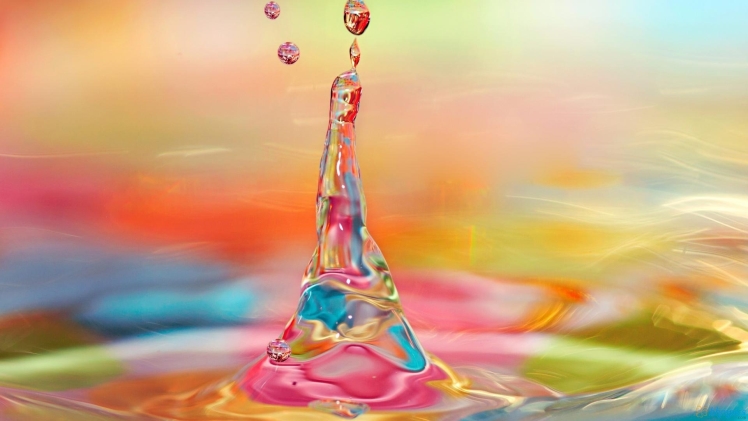Macro shots of water drops are appealing, and shapes can be further accentuated with discreet coloring. You could treat the bland surface with a linear gradient from #772222 (RGB 119, 34, 34) to #3333bb (RGB 51, 51, 187). If the photo is on a layer of its own, click on Layer → Layer Style → Gradient Overlay or double-click the layer next to its name. Set the blend mode to Color, the opacity to 50%, the gradient to “Foreground to background color” and the angle to 90%.
The gradient will be saved as a layer style, so you can come back at any time to adjust the values. Double-clicking the style name opens up the dialog window once more. If the skin is not quite perfect after retouching, it might be because of the general hue. You can control it by going to New Adjustment Layer → Hue/ Saturation.
Click on the miniature mask, and press Control/Command + I to invert the mask. Using white color and a soft brush, paint over the skin areas so that only they get treated. For the adjustment, switch from Standard to “Reds” (found in the Hue drop-down menu of the Adjustment layer), and use the Hue, Saturation and Lightness sliders to adjust the skin color.
Lastly comment
Switch to “Yellows” and optimize the skin tone. Getting the colors exactly right depends very much on the image material. Rely on your common sense. A sunburn or a blush can disrupt a portrait, especially if there is a contrasting pale person nearby. Photoshop has a tool to correct that: “Match Color” offers control over skin tones. Open your image and use the Quick Selection tool to roughly select the red skin areas.
You can visit this to know tvgosat. You can also collect the latest headline news around the world from golpanews.

